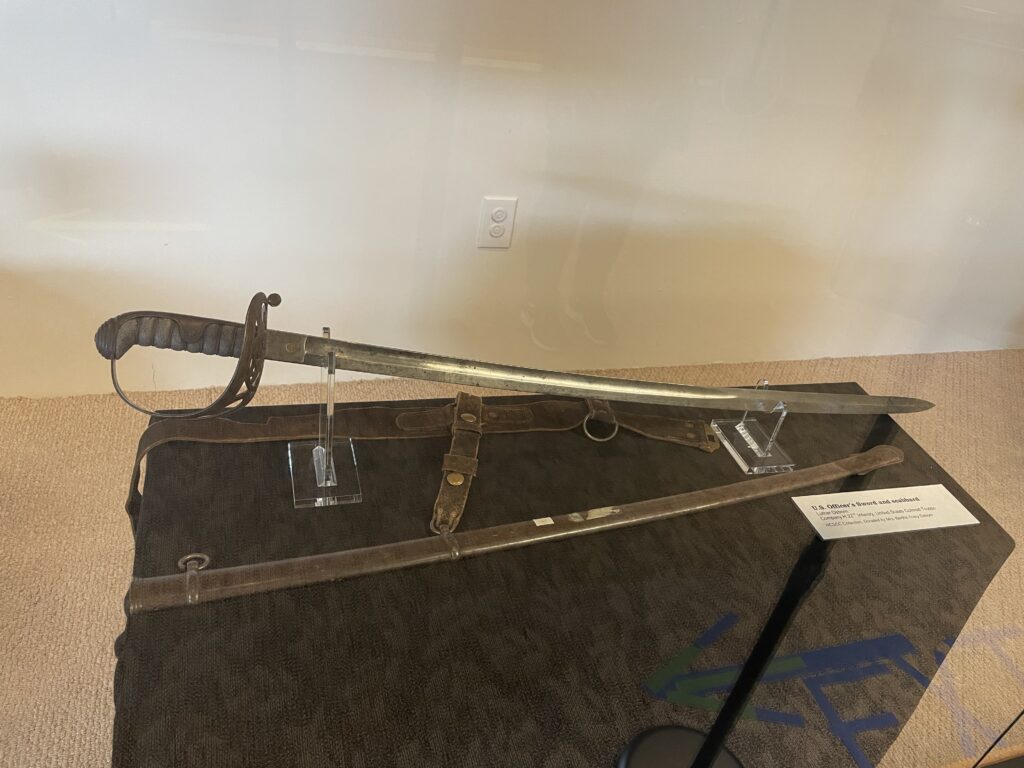
The sword of Captain Luther Osborn, 22nd United States Colored Infantry.
clay county histories
Markus Krueger | Program Director HCSCC
The national debate over mascots has hit Clay County. A campaign called “New Mascot 4 DGF” launched on Facebook and Twitter with an online petition at Change.org to “Remove and replace the Rebel mascot of MN ISD #2164, Dilworth-Glyndon-Felton.”
What’s wrong with being a Rebel? Supporters of the petition say that the mustachioed mascot in the grey uniform is pretty obviously a cartoon caricature of a Confederate soldier. This sounds like a great excuse to talk about one of my passions: Civil War history! And we just happen to have a display about Clay County Civil War veterans at the Hjemkomst Center right now!
While our historical society isn’t going to take an official stance on this name change, I will say that, historically speaking, DGF is a strange place to have a Confederate soldier for a mascot. I’ve never encountered any evidence of a single Confederate veteran ever living in Clay County, Minnesota. On the contrary, many of our county’s sodbusters and city fathers were Union veterans who moved to the frontier in the decade after the war.
One such pioneer was Luther Osborn, the publisher of Glyndon’s Red River Valley News. Osborn volunteered as a private and mustered out as a Captain of the 22nd United States Colored Infantry. According to the Confederate States of America, because Luther was a white officer in a unit composed of African American soldiers, Luther was leading a slave revolt. If he surrendered, the Rebels would have executed him. Capt. Osborn’s officer sword is currently on display at the Hjemkomst Center.
The dashing Captain Jacob Henry Smyser was a hero of the Battle of Shiloh. After the war, he built a mansion outside of Glyndon. He never plowed his land, but instead raised horses who grazed on the natural prairie grass. Because it was such a rare example of preserved tallgrass prairie, Capt. Smyser’s country estate became the core of Buffalo River State Park in 1937.
Caroline Day’s husband never made it to Clay County. Daniel S. Day was one of the 13,000 Union POWs killed in the infamous Andersonville Prison, where Rebel guards committed daily atrocities against US soldiers. After the war, his widow and children settled northeast of Glyndon. In 1876, Caroline successfully proved up on her Homestead Claim in section 26 of Spring Prairie Township. She was the second of 78 women in Clay County to earn 160 acres under the Homestead Act.
When the Glyndon-Felton Buffalos and the Dilworth Locos merged their schools in 1991, they let the students choose a new mascot. I’m sure the kids didn’t realize they were naming themselves after their ancestors’ enemies (I doubt the “DFG Viet Cong” was up for consideration). Everyone knows that around here “Rebel Pride” is about basketball or volleyball, not slavery or Andersonville or the thousand other injustices committed by the Confederacy that, like it or not, are all attached to the cartoon character. Ironically, DGF kids can be proud that their founding families were Yankees, not Rebels.

